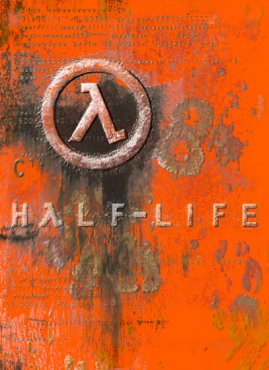
Half-Life is a 1998 first-person shooter (FPS) game developed by Valve Corporation and published by Sierra Studios for Windows. It was Valve's debut product and the first game in the Half-Life series. The player assumes the role of Gordon Freeman, a scientist who must escape the Black Mesa Research Facility after it is invaded by aliens following a disastrous scientific experiment. The gameplay consists of combat, exploration and puzzles.

Valve Corporation, also known as Valve Software, is an American video game developer, publisher, and digital distribution company headquartered in Bellevue, Washington. It is the developer of the software distribution platform Steam and the game franchises Half-Life, Counter-Strike, Portal, Day of Defeat, Team Fortress, Left 4 Dead, and Dota.

Team Fortress Classic is a first-person shooter game developed by Valve and published by Sierra Studios. It was originally released in April 1999 for Windows, and is based on Team Fortress, a mod for the 1996 game Quake. The game puts two teams against each other in online multiplayer matches; each member plays as one of nine classes, each with different skills. The scenarios include capture the flag, territorial control, and escorting a "VIP" player.
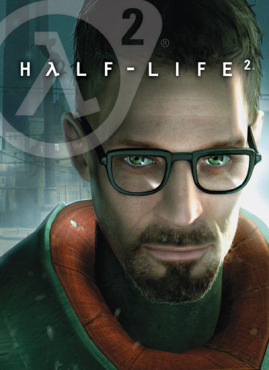
Half-Life 2 is a 2004 first-person shooter (FPS) game developed and published by Valve Corporation. It was published for Windows on Valve's digital distribution service, Steam. Like the original Half-Life (1998), Half-Life 2 combines shooting, puzzles and storytelling, and adds features such as vehicles and physics-based gameplay. The player controls Gordon Freeman, who joins a resistance to liberate Earth from the alien Combine empire.
Source is a 3D game engine developed by Valve. It debuted as the successor to GoldSrc in 2004 with the releases of Half-Life: Source, Counter-Strike: Source, and Half-Life 2. It is most well-known for its usage by Valve, but the engine has been used both by small teams and individuals to create modifications of Valve games, and other studios creating distinct games, notably Troika Games title Vampire: The Masquerade – Bloodlines. Valve continued to create incremental updates to the Source engine after its 2004 release, most of which coincided with games created by Valve. In the late 2010s, Valve created the Source 2 engine to replace Source, with it publicly debuting alongside Half-Life: Alyx. The Source engine is most well-known for its advancements in physics, AI, and graphics.
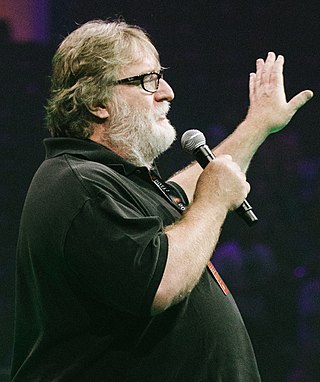
Gabe Logan Newell, nicknamed Gaben, is an American businessman and the president of the video game company Valve.
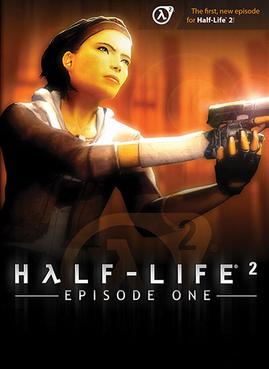
Half-Life 2: Episode One is a 2006 first-person shooter game developed and published by Valve for Windows. It continues the story of Half-Life 2 (2004); as scientist Gordon Freeman, players must escape City 17 with Gordon's companion Alyx Vance. Like previous Half-Life games, Episode One combines shooting, puzzles and storytelling.
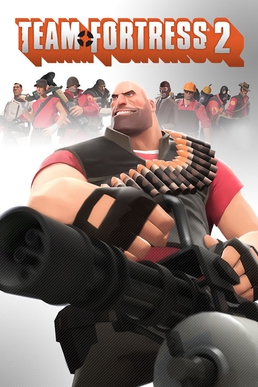
Team Fortress 2 is a 2007 multiplayer first-person shooter game developed and published by Valve Corporation. It is the sequel to the 1996 Team Fortress mod for Quake and its 1999 remake, Team Fortress Classic. The game was released in October 2007 as part of The Orange Box for Windows and the Xbox 360, and ported to the PlayStation 3 in December 2007. It was released as a standalone game for Windows in April 2008, and updated to support Mac OS X in June 2010 and Linux in February 2013. It is distributed online through Valve's digital retailer Steam, with Electronic Arts managing retail and console editions.

Erik Wolpaw is an American video game writer. He and Chet Faliszek wrote the pioneering video game website Old Man Murray. He subsequently worked for game developers Double Fine Productions and Valve, and is known for his work on video games including Half-Life 2, Psychonauts, Portal, Portal 2 and Half-Life: Alyx.

Half-Life 2: Episode Two is a 2007 first-person shooter game developed and published by Valve. Following Episode One (2006), it is the second of two shorter episodic games that continue the story of Half-Life 2 (2004). Players control Gordon Freeman, who travels through the mountains surrounding City 17 to a resistance base with his ally Alyx Vance. Like previous games in the series, Episode Two combines shooting, puzzle-solving and narrative elements, but adds expansive environments and less linear sequences.
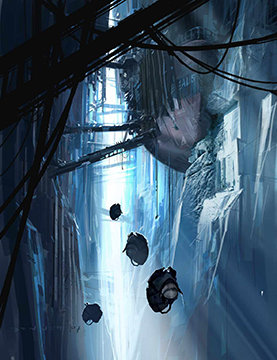
Half-Life 2: Episode Three is a canceled first-person shooter game developed by Valve. It was planned as the last in a trilogy of episodic games continuing the story of Half-Life 2 (2004). Valve announced Episode Three in May 2006, with a release planned for 2007. Following the cliffhanger ending of Episode Two (2007), it was widely anticipated. Marc Laidlaw, the writer for the Half-Life series, said he intended Episode Three to end the Half-Life 2 story arc.

Half-Life is a series of first-person shooter (FPS) games created by Valve. The games combine shooting combat, puzzles and storytelling.

The Orange Box is a video game compilation containing five games developed and published by Valve. Two of the games included, Half-Life 2 and its first stand-alone expansion, Episode One; had previously been released as separate products. Three new games were also included in the compilation: the second stand-alone expansion, Half-Life 2: Episode Two; the puzzle game Portal; and Team Fortress 2, the multiplayer game sequel to Team Fortress Classic. Valve also released a soundtrack containing music from the games within the compilation. A separate product entitled The Black Box was planned, which would have included only the new games, but was later canceled.

Dota 2 is a 2013 multiplayer online battle arena (MOBA) video game by Valve. The game is a sequel to Defense of the Ancients (DotA), a community-created mod for Blizzard Entertainment's Warcraft III: Reign of Chaos. Dota 2 is played in matches between two teams of five players, with each team occupying and defending their own separate base on the map. Each of the ten players independently controls a powerful character known as a "hero" that all have unique abilities and differing styles of play. During a match players collect experience points and items for their heroes to defeat the opposing team's heroes in player versus player combat. A team wins by being the first to destroy the other team's "Ancient", a large structure located within their base.

GoldSrc, sometimes called the Half-LifeEngine, is a proprietary game engine developed by Valve. At its core, GoldSrc is a heavily modified version of id Software's Quake engine. It made its debut in 1998 with Half-Life and powered future games developed by or with oversight from Valve, including Half-Life's expansions, Day of Defeat and games in the Counter-Strike series.

Polycount is a website and community of professional & hobbyist artists that specialize in creating 3D art for video games.

Source Filmmaker is a 3D computer graphics software tool published by Valve for creating animated films, which uses the Source game engine. Source Filmmaker has been used to create many community-based animated shorts for popular Source games, such as Team Fortress 2, the Left 4 Dead series, and Half-Life 2.
Source 2 is a video game engine developed by Valve. The engine was announced in 2015 as the successor to the original Source engine, with the first game to use it, Dota 2, being ported from Source that same year. Other Valve games, such as Artifact, Dota Underlords, Half-Life: Alyx, and Counter-Strike 2, have been produced with the engine.

Half-Life: Alyx is a 2020 virtual reality (VR) first-person shooter game developed and published by Valve. It was released for Windows and Linux with support for most PC-compatible VR headsets. Set five years before Half-Life 2 (2004), players control Alyx Vance on a mission to seize a superweapon belonging to the alien Combine. Like previous Half-Life games, Alyx incorporates combat, puzzles and exploration. Players use VR to interact with the environment and fight enemies, using "gravity gloves" to snatch objects from a distance, similarly to the gravity gun from Half-Life 2.


















